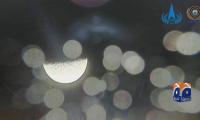As difficult as it may be for most of us, it is sometimes imperative to try and climb into the twisted, distorted minds of killers – the men or, in some cases, young boys who carry out the suicide attacks that leave behind so much carnage, targeting men, women and children alike. It is, of course, not only the bombers who are involved, but also those behind them who plan, facilitate and coordinate the attacks.
We know that extremist thinking, the ongoing war against the state and its machinery and the contempt for the religious philosophy propounded by the Sufi mystics who spread the faith across the region, are all factors that contribute towards the massacres. But are we familiar enough with the thinking of people, teenagers and even children who are confused by what is happening? Yes, we read the social media posts, the expressions of outrage and agony. But most of these come from people we know – at least indirectly.
These people belong broadly to the same social circle as our own and their ideas have been shaped by essentially similar educational, cultural and social experiences. While there is a divergence of opinion, the world these groups inhabit is basically the same.
Other worlds do exist, parallel to our own. The zones of exclusion are so tightly drawn that little filters across. There are almost no similarities even if the people who inhabit each world look out on the same sun and the same moon every day. But, in every other sense, their worlds are quite different. The dilapidated government schools or substandard private schools that children living in the bigger world attend have little in common with the luxurious private schools where their peers in that other world, located perhaps even a street away, study.
There is also a divide based on the language spoken, the lifestyle led and the pursuits followed. And then as a sub-world, we also have the hidden realm of the madressah, about which we know too little. Are mindsets of hatred really created within these institutions or at least some of them?
We need to know more to understand what forces shape evil ideas – even within elite institutions – and enable them to be expressed as terrible, crippling violence. Too much of what drives our country and events within it are unknown to us; we have made little effort to inquire about them.
The lack of connection between these worlds adds to our difficulties. People who inhabit one world are almost completely cut off from the other. The points of inter-section are closed. Language acts as a barrier and tied into it is the heavy baggage of class. The most elite schools mingle only with each other and the parents whose children attend them have been known to object when these rules are pushed aside – even if only briefly. For adults as well, the spheres rarely cross over except in the controlled realm of the workplace.
But there is limited real interaction, few real connections and therefore little possibility of movement across that line of exclusion. This means that a person who is born in one world is likely to remain there till his or her death. Unequal education cancels the possibility of crossing over in most cases and other means of upward mobility are extremely limited.
We do not know and understand enough. Inevitably, this breeds anger and hatred and the spirit of revenge. Is the growing divide one reason why people cross over into the dark world of extremism? It seems that mosques and madressahs are the only spaces from which they are allowed to speak as equals. They are not invited to other forums of discussion – whether within the media or at education institutions. When we talk about extremism, we do not hear the voices of those who are worst affected by it.
We hear only occasionally from the impoverished people of the slums, especially members of minority communities. Their world is not permitted to be interspersed with ours. This exclusion has created sinister, dark areas within our society. The feeling of being left out leads people to take desperate measures.
It is quite clear in our society who belongs to the privileged class – and, by extension, to that world of empowerment – and who belongs to the other worlds. We need to consider ways in which the bridges can be crossed. Doing so may also help initiate a debate on the varying beliefs which flicker through our society and, once again, create some sense of harmony on issues as sensitive as religious persuasions or how precisely the state should function.
The process of intermingling should ideally begin at an early stage. The idea of class is taught to young children. It is not an inborn trait. If they see certain members of society act only as domestic helps, a specific message is sent out. During their school life, most children from one world will never meet the other. The average child attending a private school and its world has no notion of what life is like for those studying in public sector schools.
The realities are quite different. In many ways – especially at a time when there is so much talk about social responsibility – it is time for our more privileged schools to find ways of including those from other backgrounds in their activities. While some two or three decades back, less ‘up-market institutions’ would participate at sporting competitions that were held at elite schools, this seems no longer to be the case. Everyone stays strictly within their own sphere and the lines are drawn in thicker, darker ink than ever before.
As a result, we do not even know how millions of people among us think and what they believe. There have been a few surveys which accurately reflect the sentiments of ordinary people on extremism, belief and violence. Yes, there is reason to believe that the majority opposes terrorism and the killing and mayhem it brings. But we also see a world that stand on the brink of chaos.
After the Sehwan Sharif massacre, thousands took to the streets to protest against the police. Many among them were young boys, pre-teens and teenagers, who simply appeared to be venting their anger over social conditions and the state into which they were born instead of specifically directing protest against the law enforcers.
This has been seen also on various occasions. For instance, events which serve to equalise the public in some sense – such as Basant – have now been outlawed. This alone would perhaps mean little in the wider social context of the country. But as part of the wider reality, it means quite a lot. We have divided people more and more. As a result, there is less harmony.
Calling upon people to stand united against terror or any other threats is essentially meaningless. They are not unified, in the first place, under the flag of a shared nation. That nation has been divided into too many separate zones. From some of these zones, the anger that spills over adds to the lawlessness that promotes terrorism and offers empowerment to the disempowered by handing them a gun, a slogan and the right to kill.
The writer is a freelance columnist and former newspaper editor.
Email: kamilahyat@hotmail.com
The post-election situation will be troublesome and worrisome for Modi
Most favourable concept developed so far revolves around public-private partnerships
There is only one way forward: cut non-development expenditures, including non-combat defence expenditure
The plan aims to ensure financial stability, control inflation, and promote economic prosperity
Currently, a staggering 60 per cent of government revenue is being wasted on interest payments
It seems that Beijing’s goodwill, stronger financial stature, principle of non-interference in domestic affairs and...







